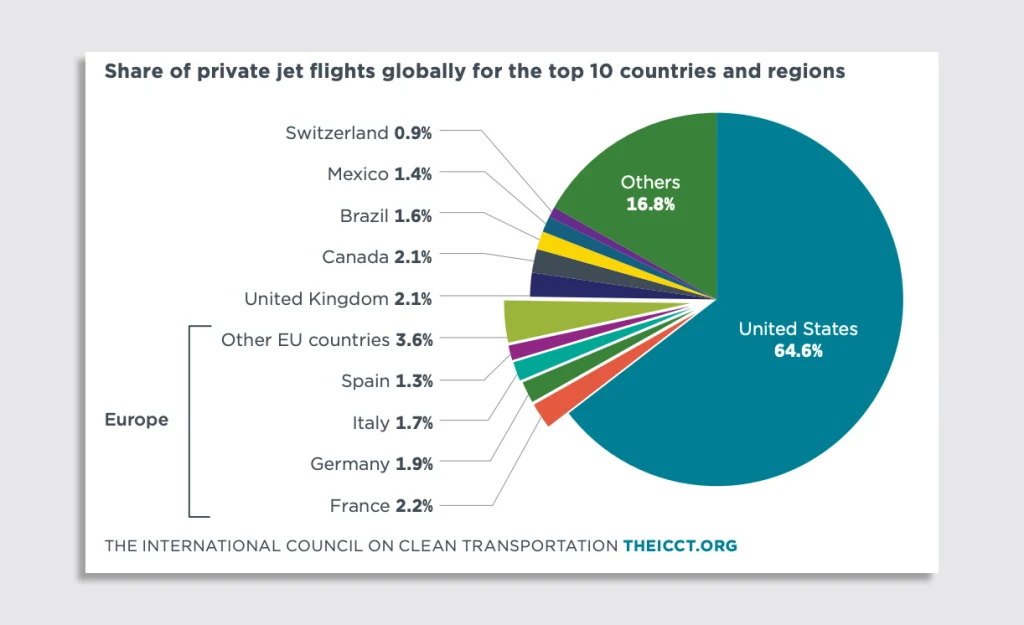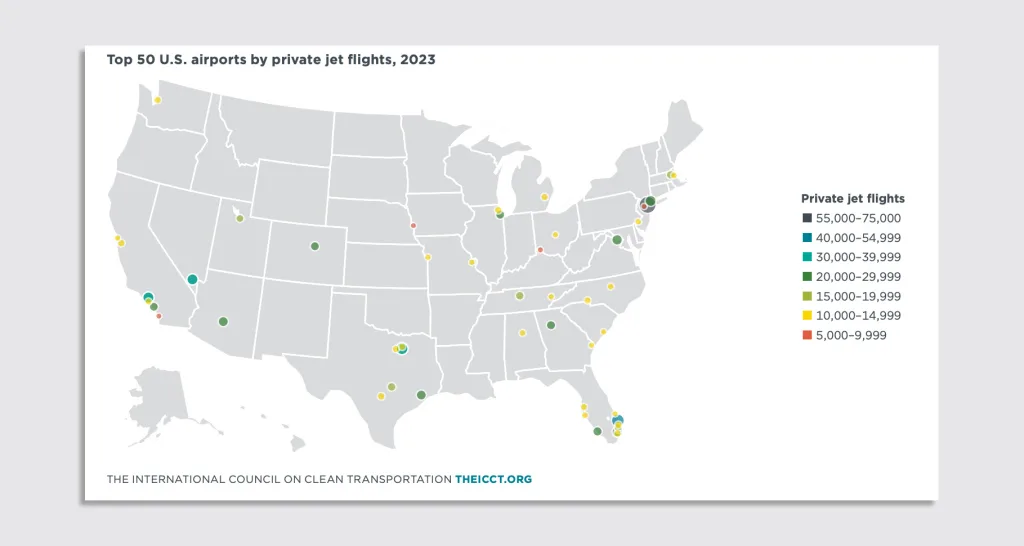Private jet use is soaring—and the U.S. is responsible for the most flights

Van Nuys Airport in Los Angeles is one of the country’s busiest general aviation hubs, as residents nearby can attest. Those who live near the airport say they hear a “relentless” roar of planes overhead—but none of those flights are commercial. Instead, Van Nuys serves private air travel, and it’s where celebrities like Kim Kardashian and Elon Musk store their private jets.
Van Nuys is also the third most polluting private airport in the world, according to a new study from the International Council on Clean Transportation (ICCT). It’s also just one example of the way private jet use has been growing, particularly in the United States. Of the 20 largest airports for private jet use, 18 are located in the U.S., including Van Nuys, Palm Beach International Airport, and New Jersey’s Teterboro Airport, which is just 12 miles from midtown Manhattan. (The other two top airports for private jets were located in France.)

Private jets come with a huge carbon footprint. One typical private jet emits the same amount of greenhouse gasses per year as 177 cars. And the use of private jets has been increasing. ICCT estimates that private jets produced up to 19.5 million tonnes of greenhouse gas emissions in 2023, a 25% increase over the past decade—and equivalent to driving nearly 50 billion miles in an average gas car.
Aviation overall accounts for 2.5% of the world’s emissions. But how you fly can change your personal carbon footprint. On a commercial flight, those spacious business-class seats are responsible for up to five times as many CO2 emissions as seats in economy. That means people who take private jets, which typically have between six and 19 seats, are responsible for an even bigger share of emissions.

Private jet use accounts for about 2% of global aviation emissions. In 2023, global private jet flights collectively emitted more greenhouse gasses than all flights departing from London’s Heathrow Airport, which is the busiest airport in Europe.
Private jet flights also tend to be quick jaunts: less than 900 kilometers, and lasting fewer than two hours. (Short haul flights produce a disproportionate amount of emissions, accounting for about a third of aviation’s total carbon footprint.)

And most of the private jet flights happen, or at least start in, the U.S. Two-thirds of all private jet flights in the world departed from U.S. airports in 2023, accounting for 55% of all private jet emissions globally. Private jet use here has made headlines multiple times, as people have tracked Taylor Swift’s personal plane journeys or the fact that Starbucks CEO Brian Niccols would be using a business jet (a type of private jet) to commute from his home in Newport Beach, California, to the company’s headquarters in Seattle.
The U.S. is so flush with private jets that Florida and Texas together were the source of more private jet flights and greenhouse gas emissions than the entire European Union.
When it comes to curbing private jet use, some policymakers have floated the idea of taxing private jet emissions or fuels. In 2023, Congress introduced legislation to raise private jet fuel taxes from $0.22 to $1.95 per gallon, which would essentially be $200 per metric ton of a private jet’s CO2 emissions. While that proposal didn’t gain much traction, the tax proposal has recently been reintroduced.
Such a tax, the ICCT report estimated, could generate $3 billion annually for decarbonization efforts. “Given the slow pace of technological progress,” said Dan Rutherford, ICCT’s Senior Director of Research, in a statement, “it’s reasonable to charge ultrawealthy travelers more for their pollution.”
What's Your Reaction?
 Like
0
Like
0
 Dislike
0
Dislike
0
 Love
0
Love
0
 Funny
0
Funny
0
 Angry
0
Angry
0
 Sad
0
Sad
0
 Wow
0
Wow
0

















































![[Video] Maddie Medley shares intense visuals for haunting track "Fawn's Rage"](https://earmilk.com/wp-content/uploads/2025/06/Screenshot-2025-06-30-at-7.51.44%E2%80%AFPM-800x777.png)











































